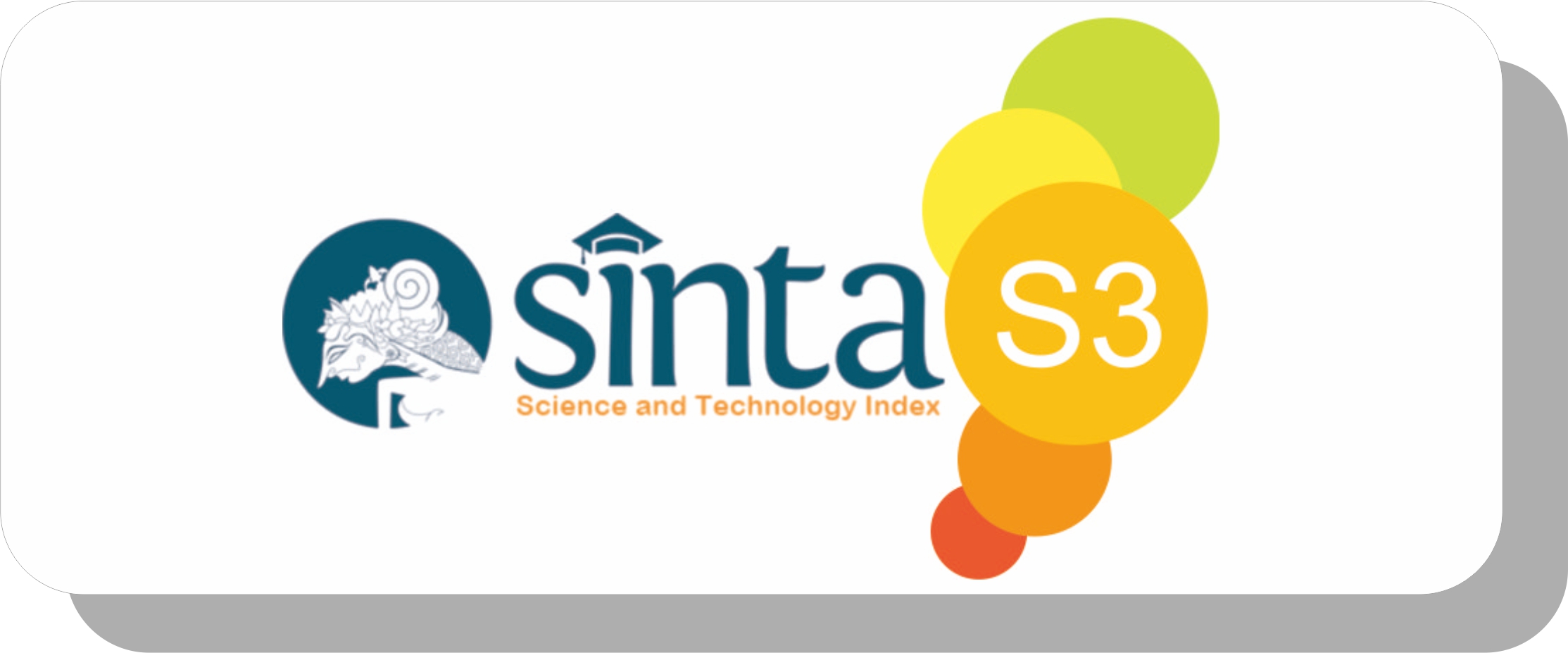Developing a Model of Women's Empowerment for Environmental Adaptation and Disaster Mitigation in Malang Regency
DOI:
https://doi.org/10.22219/jurnalsospol.v9i2.27950Keywords:
Climate Change Adaptation, Disaster Mitigations, Green Belt Movement, Women EmpowermentAbstract
The damaged condition of the coastal forests in Malang Regency prompted the community to carry out conservation activities called the Green Belt Movement. This movement was initiated by the people around Sendang Biru, who are members of the Bhakti Alam Sendang Biru (BASB). The conservation movement has supported global efforts in climate change adaptation and disaster mitigation. Unfortunately, the movement is still lack of women involvement, but it is still dominated by men. This paper aims to reformulate the BASB green belt movement model by integrating gender mainstreaming in order to empowering local women in environmental adaptation and mitigation through conservation. The method used in this study is a qualitative approach with data collection techniques through interview, observation and literature study. As a form of empowering women through the Green Belt Movement by involving local women as the main actors, it is necessary to carry out intensive and massive counseling to construct awareness, provide positive affirmations and women's confidence. Furthermore, women communities’ institutionalization, increasing human resources through technical education and training programs and having economic benefits without ignoring ecological values are also considered to be necessary. Additionally, it is essential to encourage participation among stakeholders, especially government, to ensure the movement sustainability.
Downloads
References
References
Amir, Astaman Modesta Ranny Maturbongs, dan Andrias Steward Samusamu (2013). Eksistensi Perempuan Pesisir Marind Imbuti Pada Rehabilitasi Hutan Mangrove di Pantai Payum Kabupaten Merauke. Jurnal, Jurnal Kebijakan Perikanan Indonesia. http://dx.doi.org/10.15578/jkpi.13.2.2021.103-110
Anggawa, L. P. (n.d.). Founder Lembaga Masyarakat Konservasi Bhakti Alam Sendang Biru. http://putradaerah.com/2016/03/05/314/ .
Arinda, G. (2015, Juli 6 ). UNFPA: Perempuan Rawan Kekerasan Seksual Saat Bencana. Retrieved from https://www.beritasatu.com/kesehatan/288866/unfpa-perempuan-rawan-kekerasan-seksual-saat-bencana-alam
bhaktialam. (n.d.). Masuk Nominasi Menuju Penghargaan Menuju Indonesia Hijau. Retrieved from http://www.bhaktialam.org/2015/03/masuk-nominasi-menuju-penghargaan.html
F, N. L. (2016, Juli 02). Menyemai Asa di Pesisir Malang. Retrieved from https://travel.kompas.com/read/2016/06/02/200300327/Menyemai.Asa.di.Pesisir.Malang?page=all
Presbey. Gail M. (2013). Women’s empowerment: the insights of Wangari Maathai. Jurnal, Journal of Global Ethics. https://doi.org/10.1080/17449626.2013.856640
HAM, KOMNAS. (2020). Kajian Pemenuhan Hak Atas Kesehatan Bagi Kelompok Rentan di Indonesia. Jakarta.
Hayanga, Awori J. (2007) Wangari Mathai: an African Woman’s Environmental and Geopolitical Landscape. Jurnal, International Journal of Environmental Studies. https://doi.org/10.1080/00207230600948024
Jackson, C. (1993). Doing What Comes Naturally? Women and Environment in Development. World Development, Vol. 21, No. 12, 147. doi:https://doi.org/10.1016/0305-750X(93)90068-K
KEMENPPA. (2016). Gender Dalam Bencana Alam dan Adaptasi Iklim.
Maathai, W. (2011, September 26). The Telegraph. Retrieved from https://www.telegraph.co.uk/news/obituaries/politics-obituaries/8790642/Wangari-Maathai.html
Maathai, W. (2012). Gerakan Sabuk Hijau (terj.). Jakarta: Marjin Kiri.
Maulana, Risal dan Nana Supriatna (2013) Ekofeminisme: Perempuan, Alam, Perlawanan atas Kuasa Patriarki dan Pembangunan Dunia (Wangari Maathai dan Green Belt Movement 1990-2004). Jurnal, Jurnal Sejarah dan Pendidikan Sejarah. https://doi.org/10.17509/factum.v8i2.22156 (18/07/2023.14.34 WIB)
Merchant, C. (2005). Radical Ecology The Search for a Livable World. New York: Taylor and Francis Group. Retrieved from http://www.brontaylor.com/courses/pdf/Merchant--Ecofeminism(2005).pdf
Moeliono, M., Wollenberg, E., Limberg, G., & eds. (2009). Desentralisasi tata Kelola Hutan: Politik, Ekonomi dan Perjuangan Untuk Menguasai Hutan di Kalimantan, Indonesia. doi:https://doi.org/10.17528/cifor/002652
Muthuki, J. (2006). Challenging Partriarchal Structures: Wangari Maathai and the Green Belt Movement in Kenya. Agenda: Empowering Women for Gender Equity, 69, 82-91. Retrieved from http://www.jstor.org/stable/4066816
Perhutani. (n.d.). Perum Perhutani. Retrieved from http://www.bumn-swasta.web.id/2015/07/perum-perhutani.html
Rechlin, Bethany Boyer (2010). Women in forestry: A Study of Kenya’s Green Belt Movement and Nepal’s Community Forestry Program. Jurnal, Scandinavian Journal of Forest Research. https://doi.org/10.1080/02827581.2010.506768
Septian, A. (2015, November 21 ). WISATA PANTAI: Hutan Bakau yang Memukau di Pantai Malang. Retrieved from https://travel.tempo.co/read/720978/wisata-pantai-hutan-bakau-yang-memukau-di-pantai-malang
Setiawan, N. H. (2017, April 29). Suitability Index of Mangrove Ecotourism In Malang Regency Indeks Kesesuaian Ekowisata Mangrove Di Kabupaten Malang. ECSOFiM: Journal of Economic and Social of Fisheries and Marine, 154. doi:DOI: http://dx.doi.org/10.21776/ub.ecsofim.2017.004.02.05
Supriyanto, A. (2013, Maret 13). 57 Persen Bakau di Pantai Selatan Malang Rusak. Retrieved from tempo.co: https://nasional.tempo.co/read/466700/57-persen-bakau-di-pantai-selatan-malang-rusak
Udvardy, M.L. (1998) Theorizing Past and Present Women’s Organizations in Kenya. Jurnal, ScienceDirect. https://doi.org/10.1016/S0305-750X(98)00081-3
USAID. (2011, Oktober-Desember). Integrasi Adaptasi Perubahan Iklim dan Pengurangan Risiko Bencana. Retrieved from API Perubahan: http://pdf.usaid.gov/pdf_docs/PA00M52S.pdf
USAID, A. (2017, Januari 10-13 ).
Interview
Anggawa, L. P. (2017, Januari 1 ).
Saptoyo. (2017, Januari 1). pendiri Yayasan Bhakti Alam Sendang Biru (BASB).
Downloads
Published
How to Cite
Issue
Section
License
Copyright (c) 2023 ruli ramadhoan

This work is licensed under a Creative Commons Attribution-ShareAlike 4.0 International License.
Authors who publish with this journal agree to the following terms:
- Authors retain copyright and grant the journal right of first publication with the work simultaneously licensed under a Creative Commons Attribution-ShareAlike 4.0 International License that allows others to share the work with an acknowledgement of the work's authorship and initial publication in this journal.
- Authors are able to enter into separate, additional contractual arrangements for the non-exclusive distribution of the journal's published version of the work (e.g., post it to an institutional repository or publish it in a book), with an acknowledgement of its initial publication in this journal.
- Authors are permitted and encouraged to post their work online (e.g., in institutional repositories or on their website) prior to and during the submission process, as it can lead to productive exchanges, as well as earlier and greater citation of published work (See The Effect of Open Access).

This work is licensed under a Creative Commons Attribution-ShareAlike 4.0 International License.


















